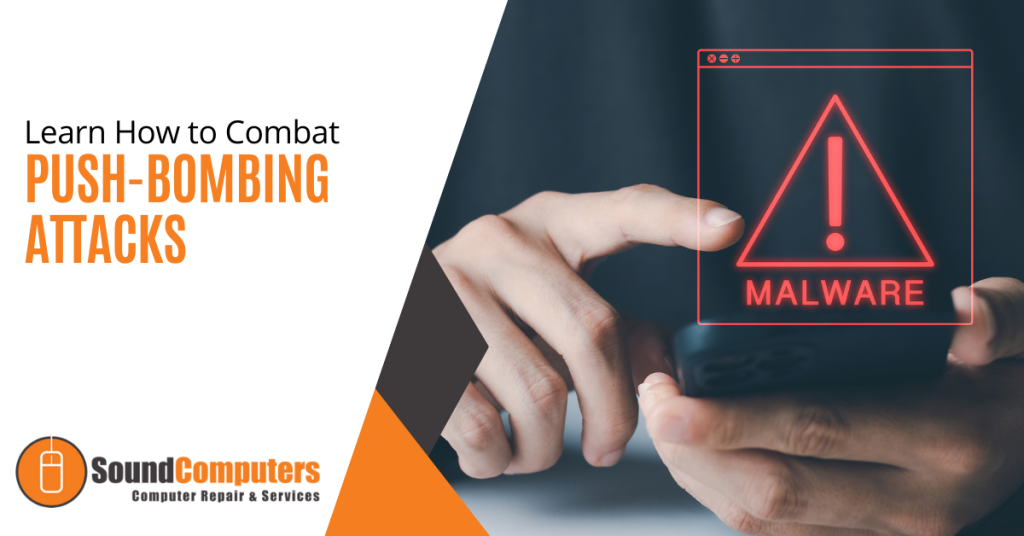
Push-bombing attacks are a type of cyberattack involving automated tools to send a high volume of malicious traffic to a targeted system. This attack is designed to overwhelm the target’s defenses and disrupt its normal functioning.
In this fast-paced digital era where technology is constantly evolving, businesses seek innovative strategies to safeguard their sensitive data and protect themselves from potential threats posed by cybercriminals. Unfortunately, as technological innovations continue to rise, cyber threats also rise. Hackers also look for loopholes to exploit personal data.
Businesses have tried implementing efficient ways to curb any risk of a data breach because each data breach now costs 4.35 million U.S. dollars according to a report by Statista. At first, implementing multi-factor authentication (MFA) was once considered a promising approach. However, the arrival of push-bombing has shifted this perspective.
Push-bombing attacks can be highly effective in causing damage to an organization’s network and it is crucial for business owners to learn how to combat them effectively. This article will discuss the key steps organizations can take to protect themselves against push-bombing attacks. First, let us discuss how push-bombing attacks work.
Understanding Push-Bombing Attacks
Before discussing practical ways to combat push-bombing attacks, it is vital to understand how they work. Push-bombing is typically carried out using botnets which are grids of compromised computers that a single attacker controls. These botnets are used to generate a large volume of traffic directed at a specific target with the intention of overwhelming the target’s servers or bandwidth capacity.
Push-bombing can take several forms. Some hackers may use a Distributed Denial-of-Service (DDoS) attack in which many requests are sent to a targeted server or website to cause it to crash or become unavailable. Other push-bombing strategies may involve flooding a network with data packets that can cause network congestion and slow down or disrupt normal traffic.
Furthermore, push-bombing can be carried out via email bombing, SMS bombing and web bombing.
Email Bombing: It involves sending many emails to a target email address which causes the email server to become overloaded and unable to process legitimate emails.
SMS Bombing: It works in a similar way to email bombing but involves sending a large number of text messages to a target phone number which causes the phone to become overloaded and unresponsive.
Web Bombing: This involves sending a large number of requests to a web server which causes it to become overloaded and unable to process legitimate requests.
Combatting Push-Bombing Attacks
Below you will find several steps that you can take as a business owner to protect yourself against push-bombing attacks:
-
Monitor Network Traffic
One of the critical steps in combatting push-bombing is to monitor network traffic regularly. That can help security professionals identify unusual spikes in traffic that may indicate an attack. Security teams can quickly detect and respond to any suspicious activity by monitoring network traffic.
-
Use Firewalls and Other Security Measures
Another essential step in protecting against push-bombing attacks is to use firewalls and other stringent security measures. Firewalls can help to prevent unauthorized access to a network and they can also help to identify and block malicious traffic. Additional security measures like intrusion detection systems and antivirus software can also help to detect and prevent push-bombing threats.
-
Implement Rate Limiting
Rate limiting is a technique that can help to protect against push-bombing attacks by limiting the amount of traffic that can be sent to a targeted system. That can help prevent a system from being overwhelmed by a large traffic volume. Rate limiting can be implemented at the network or application levels.
-
Use Content Delivery Networks (CDNs)
Content Delivery Networks (CDNs) can also be effective in combatting push-bombing. CDNs can help to distribute traffic across multiple servers which can help to reduce the load on any individual server. That can help protect your network system to prevent malicious traffic upsurge.
-
Train Employees
Training employees on ways to identify and respond to a push-bombing attack is crucial. Employees should be prepared to recognize the signs of an attack such as unusual spikes in traffic or slow network performance. They should also be trained on the appropriate response procedures like reporting the attack to the IT department or disconnecting from the network if necessary.
Prevent Push-Bombing Attacks with Sound Computers
You can effectively protect yourself against these attacks by taking the practical steps outlined above. Don’t get overwhelmed. We know this might be a lot to take in and that is why we are here as a professional IT company to help you through your IT issues.
At Sound Computers, we are committed to providing exceptional IT services and support to small and medium-sized businesses. With our expertise in the IT field, we can help you streamline your technological infrastructure and increase your overall productivity. Contact us today if you need assistance.
